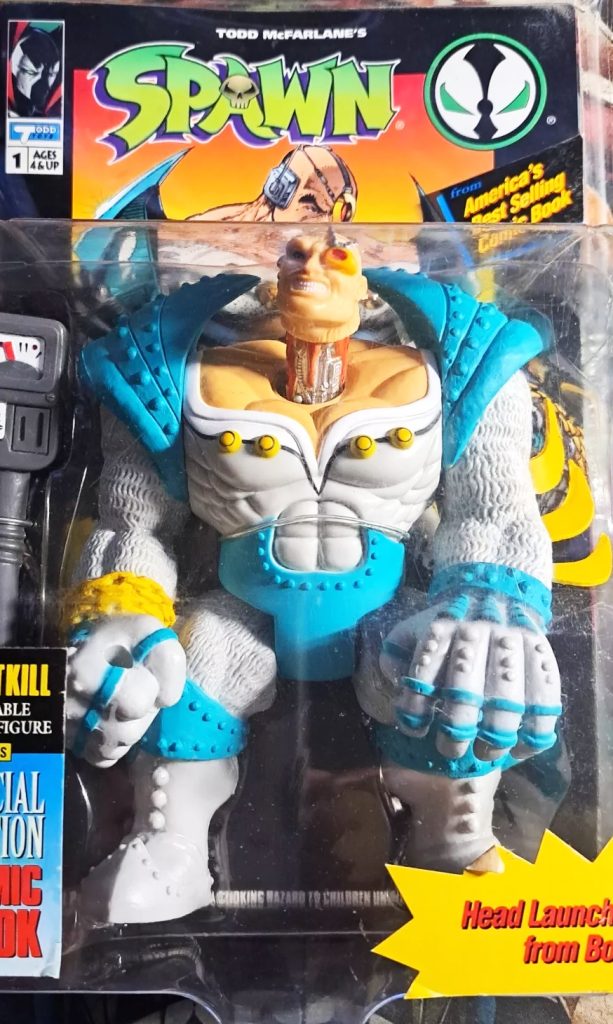In the early 1990s, comics were breaking rules—and few creators pushed harder than Todd McFarlane. His dark anti-hero Spawn (Image Comics, 1992) rocketed from debut issue to pop-culture force, then—two years later—lit the fuse on a toy revolution. With McFarlane Toys (1994), “action figures” became display pieces: hyper-detailed sculpts, heavier paint passes, and packaging that spoke to collectors as much as kids.
The Birth of Spawn: From Comics to Figures
Al Simmons, a betrayed government operative turned hellspawn, gave McFarlane a world of gothic capes, chains, and demons. Early comic issues sold in huge numbers; the audience skewed older—perfect for a premium figure line aimed at fans who wanted shelf presence, not just rough-and-tumble play.
McFarlane Toys Changes the Game (1994)
- Sculpt-first philosophy: deep textures, layered belts/straps, asymmetry—“mini statues” that still read as toys.
- Paint & finishes: heavy washes and dry-brushing to pop detail (rare in mass retail at the time).
- Posed-forward designs: expressive stances out of the box; articulation expanded across waves as engineering evolved.
Wave staples—Spawn (flowing cape), Violator, and Clown—set the line’s tone: big silhouettes, creature work that pushed tooling limits, and accessories that felt ripped from the page.
Pushing Boundaries: Detail, Design, Collectibility
McFarlane leaned into a collector market long before it was standard: variants, limited runs, chase decos, and carded presentation worth displaying. Figures prioritized visual drama; articulation and swap parts grew more sophisticated over time to support dynamic posing without blunting sculpt.
Expanding the Spawn Universe
- Angela (angelic hunter), Tremor (mutated brute), Redeemer (heaven’s answer to Spawn), Overtkill (cybernetic assassin).
- Medieval Spawn: a fan-favorite variant marrying dark fantasy armor with Spawn iconography.
- Deluxe & playsets: larger figures and dioramas like Spawn Alley invited full displays, not just a stand-alone figure.
Beyond the Comics
The brand went multimedia—an HBO animated series with a mature tone and a 1997 live-action film—each spawning (yep) new figure waves with screen-specific sculpts and accessories.
Collector Notes & Care
- Capes & chains: check capes for warping and chain attachments for stress; support capes when posing.
- Paint wear: edges of belts, spikes, and boots rub first—inspect tips and high points.
- Stands: early bases vary; add clear stands for long capes/heavy poses.
- Packaging & variants: keep card backs/inserts for provenance; note chase stickers or series tags.
- Environment: avoid heat/sun (warps, tacky paint); bag accessories separately to prevent transfer.
The Legacy
Spawn proved that mass-retail toys could be artfully sculpted collectibles—and dragged the industry forward. The ripple effects are everywhere: modern “collector lines” with premium deco, diorama parts, and adult-focused packaging owe a debt to McFarlane’s 1994 pivot.
If you’re charting 90s toy shifts, pair this with Mighty Morphin Power Rangers (role-play & zord systems) and our wrestling overview WWE Figures (play → collector evolution). For late-80s to early-90s engineering roots, see Transformers G1.
